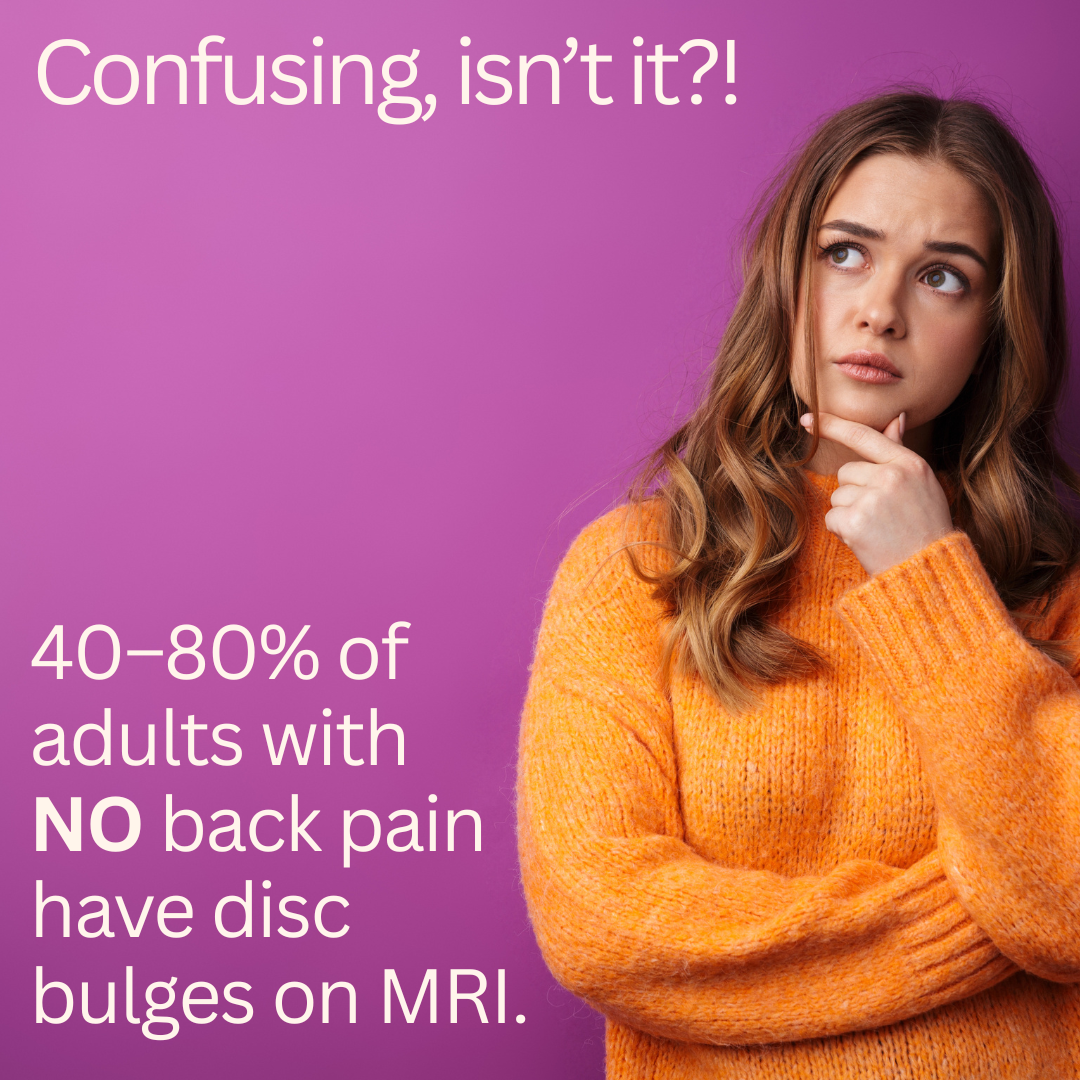If you’ve had an MRI or X-ray and been told, “It’s just wear and tear,” or “Your spine looks fine,”—you might have felt frustrated, confused, or even dismissed.
Or maybe you’ve had the opposite:
Your scan shows disc degeneration, bulging discs, or arthritis… and suddenly you’re terrified.
But here’s the truth:
Scans don’t always tell the full story.
In fact, what your scan shows doesn’t always match how you feel—and in this blog, I’ll explain why.
The Problem with Imaging
MRI and X-ray are powerful tools. They help rule out serious issues like fractures or tumors. But when it comes to explaining pain, they’re not as reliable as people think.
Why?
Because most people—even those with no back pain at all—have “abnormal” findings on scans.
The Numbers:
- 40–80% of adults without back pain have disc bulges on MRI
- Many also show disc degeneration, facet joint changes, or arthritis
- These changes are a normal part of aging, like grey hair
So just because it shows up on a scan… doesn’t mean it’s causing your pain.
Pain is Complex
Pain isn’t just about structure. It’s influenced by:
- Stress and mood
- Sleep quality
- Movement habits
- Muscle strength and coordination
- Past experiences and beliefs
This is why someone with “mild changes” on their scan may have severe pain—while another person with a “terrible-looking” scan may feel fine.
Case Studies: What Scans Didn’t Show
CASE 1: Normal Scan, Severe Pain
Jess, 38, had back pain so bad she couldn’t work. Her MRI? Clear.
But in clinic, we found stiff hips, poor core control, and loads of tension in her upper back. Once we addressed those, her pain resolved completely.
CASE 2: Scary Scan, Minimal Pain
Mark, 66, had severe disc degeneration and facet joint arthritis on his scan. He felt physio could help because of his MRI findings but he wanted to prevent things from getting worse. On assessment it was obvious that Mark’s back was not functioning well. He had very poor posture, he was not engaging his core muscles and the majority of his pain I felt was coming from muscles that were overworking – trying to support his back. Mark was an ideal candidate for the Pain Free Back Program – by improving his posture and movement patterns, building strength and control he now has very little pain and his confidence has gone through the roof – despite his scan!

What You Can Rely On
How you move
How strong and mobile your spine is
How your pain behaves with different activities
How your function is improving over time
These things tell us more than a static image ever could.
So… Should You Ignore Your Scan?
Not at all. Imaging is useful—but it’s just one piece of the puzzle. The key is to:
- Not panic if your scan sounds bad
- Not be dismissed if your scan is clear
- Focus on what you can do to improve how you feel and move
What You Can Do Next
Get a full assessment by someone who looks at your back moving—not just pictures
Strengthen your body—especially your hips, glutes, and core
Stay calm and avoid catastrophizing (your back isn’t broken!)
Learn to interpret your pain—not fear it
– We do all of this and more in the Pain Free Back Program. Click to learn more.
These Blogs May Be Helpful
Disc Bulges: When to Worry (and When Not To)
Facet Joint Arthritis: Do You Have It and What Can You Do About It?
What Your Back MRI Really Means (And Why It Might Not Be as Bad as It Sounds)
Cauda Equina Syndrome: Why Immediate Action is Crucial
Conclusion: Your Scan Isn’t the Whole Story — Your Body Is
It’s easy to get caught up in what a scan says — but remember, your pain isn’t written in black and white on an MRI or X-ray.
It lives in how you move, how you strengthen, how you recover.
The good news? That means you have so much power to change it.
By focusing on your movement, strength, and confidence — not just your scan results — you can take real steps toward lasting relief.
If you would like my help then I’m here to help you do exactly that.
Let’s take the confusion (and fear) out of the equation, and put you back in control.
Take care, Helen
Helen Manders BSc (Hons) MCSP HCPC
Chartered Physiotherapist
Treating Back Pain Since 2001
P.S. Join my FREE Back Pain Masterclass where we explore the steps to take to improve and manage your back pain.



